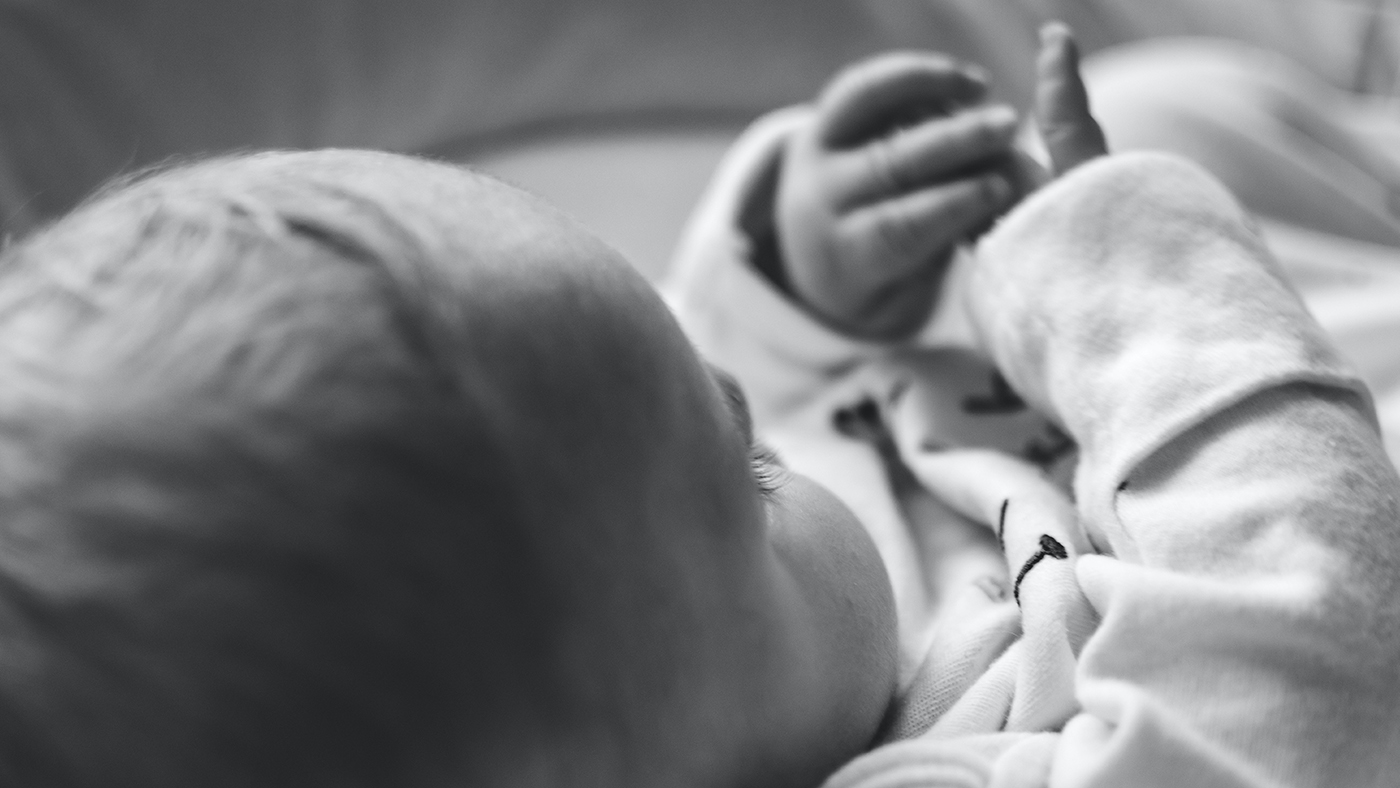Head, hands and vision – your baby's growing sense of control

Your baby will have started to move their arms and legs before they were born – you might have even spotted them sucking their thumb during a scan. Now they are learning about their body in this new environment and their movements help them to build their muscles and to develop a sense of where their body begins and ends.
Primitive reflexes
Many of your baby’s early movements are linked to primitive reflexes, which will gradually become integrated as movements start to be controlled by postural reflexes and ultimately become conscious and controlled movements.
What your baby's asymmetrical tonic neck reflex looks like
In these early weeks, your baby’s primitive reflexes support their movement and development. The asymmetrical tonic neck reflex develops during pregnancy and gradually integrates in the months following birth.
The asymmetrical tonic neck reflex involves each side of the body moving in a slightly different way; when a baby’s head turns to one side, this reflex leads to the arm and leg on that side extending while the arm and leg on the opposite side bend.[1] It is thought that the movement of your baby’s arm that is connected to this reflex might lead to them catching sight of their hand and perhaps being able to look at it as it moves.[2]
While you might not notice the reflex as such, what you might see is that your baby lies with their head turned to one side and looks at their hand.
Developing awareness of their head, hands and eyes
Newborn babies are not aware that their hands are part of their bodies. However, through these early movements in which their head, hands and eyes move together they will begin to develop this awareness.
When your baby moves their arms, their hands will sometimes touch objects around them and this feeling contributes to their understanding of their body. Watching their hands as they move close to their face and then away again also contributes to this understanding. So, giving your baby time and space to move is important, even when these movements do not seem controlled, as this early movement contributes to the development of control and body awareness.
Their awareness and control over reach and holding objects
Your baby’s awareness and control of their movements will develop in the next few months and soon they will be able to intentionally move their arms in order to look at their hands. They will then be able to move their hands towards an object and as the control of their hands develops, be able to open and close their hands in order to hold objects and then to let them go.
Your baby develops control of their body from their head to their toes and from the centre of their bodies to the extremities, so movements of fingers and toes might take a little longer to develop than the larger movements of arms and legs.
References:
[1]. Goddard-Blythe, S. (2004). The Well Balanced Child: Movement and Early Learning. Stroud: Hawthorn Press.
[2]. Arcilla, C.K, Vilella, R.C (9th May 2021) Tonic Neck Reflex. [Online] Tonic Neck Reflex - StatPearls - NCBI Bookshelf (nih.gov) (Accessed on 21st September 2021